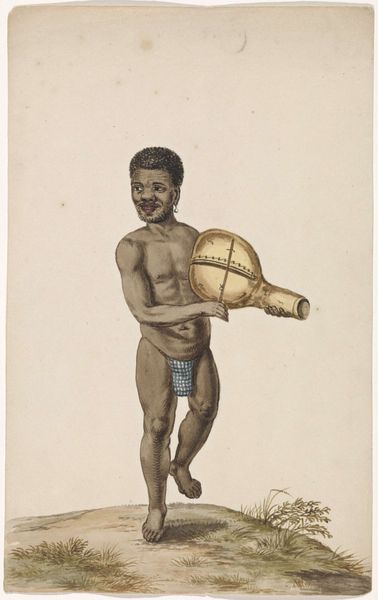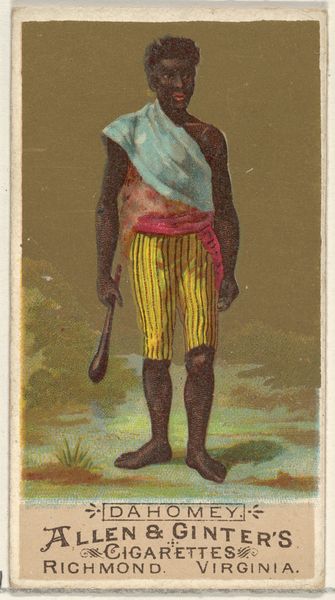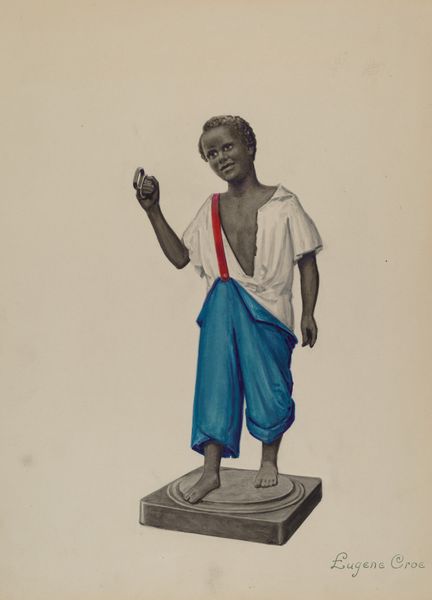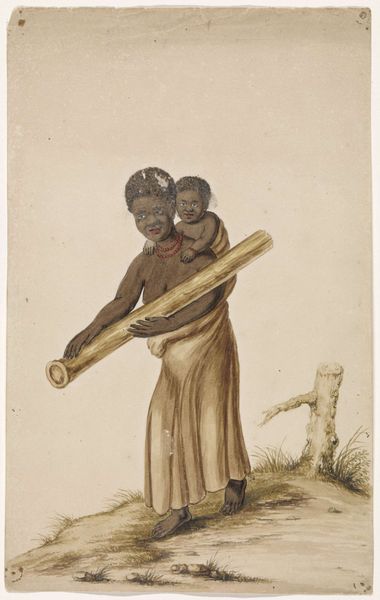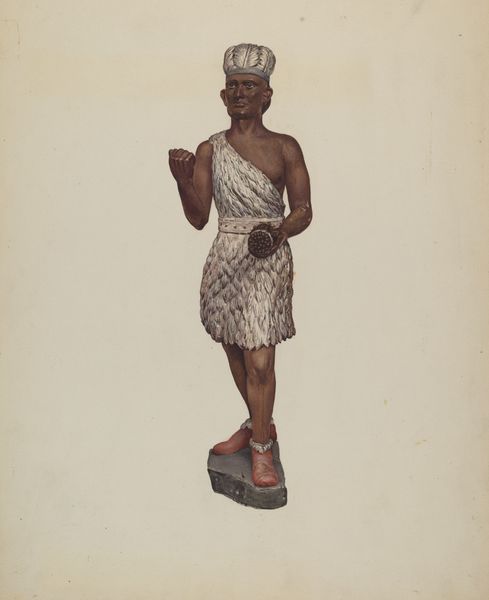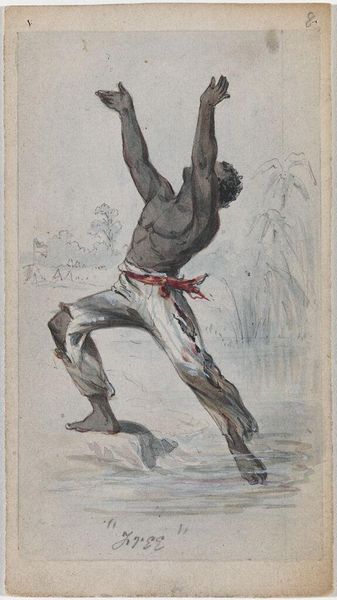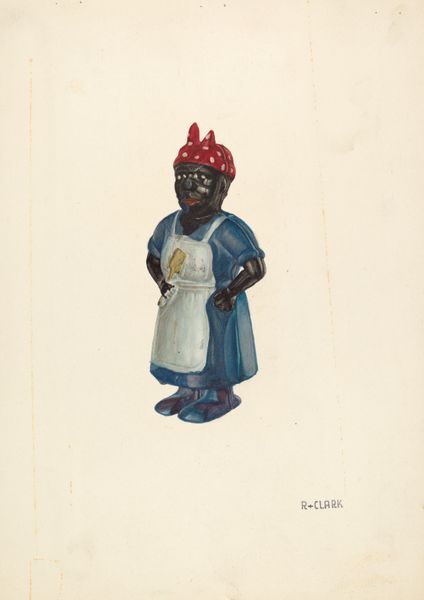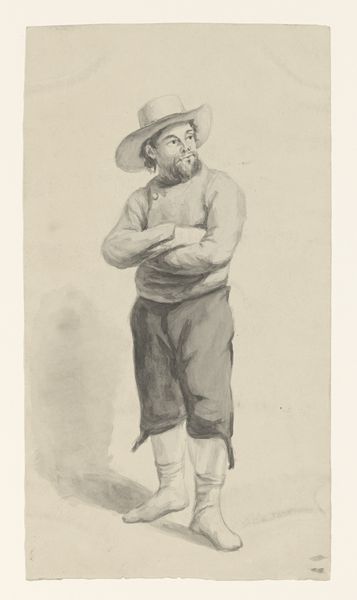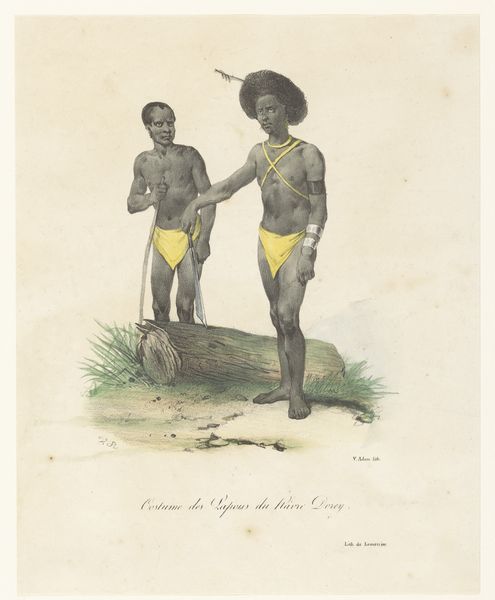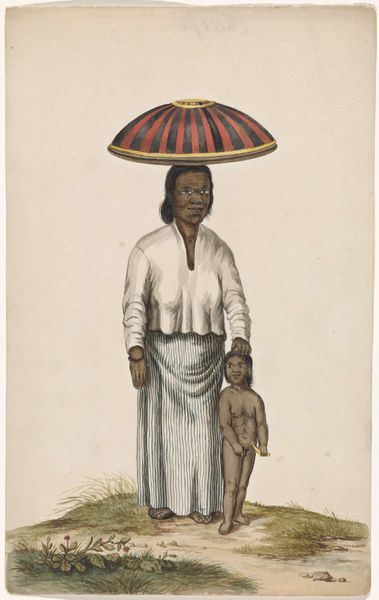
watercolor
#
portrait
#
african-art
#
baroque
#
caricature
#
watercolor
#
pencil drawing
#
portrait drawing
#
genre-painting
#
nude
#
watercolor
Dimensions: height 320 mm, width 200 mm
Copyright: Rijks Museum: Open Domain
Curator: What do you make of this intriguing portrait drawing? It's cataloged as "Afrikaanse vrouw met handtrom," or "African Woman with Hand Drum," believed to be created sometime between 1675 and 1725. It's done in watercolor and pencil. Editor: Striking, mostly for its austerity. The subject is centered, nearly symmetrical save for the tilted drum, with that pale background. There is such strong verticality emphasized by the figure’s stance and striped skirt, giving the piece a slightly unstable feel despite its formal qualities. Curator: Absolutely, that formal quality plays a significant role. Drawings such as this one were created in an era when European exploration and colonization were increasing. There was a surge in Europeans creating what they considered accurate depictions of people from other regions of the world. However, they reflect a complicated and often exploitative power dynamic between colonizer and colonized. Editor: The social and historical context you describe clashes a bit with how simple the artist has rendered her surroundings. Very basic, the suggestion of earth and greenery underfoot. The eye is left with little to consider beyond the core subject. Curator: Indeed. Her clothing is not just a random set of stripes, nor the drum just happenstance. Everything communicates something, wittingly or not. One must wonder what exactly was the intended message behind this image. Editor: I do agree. This rendering appears to seek balance, a controlled likeness of sorts in muted watercolor shades, though perhaps undermined by an unconscious hand. Do you think this neutral tone achieves a desired objectivity, or could this simplicity contribute to the further alienation of its subject? Curator: That is what I find myself asking here, what the degree of consideration given to a full vision and life of its subject really meant. It speaks of both the desire for documentation and the inherent biases shaping such endeavors during this historical moment. Editor: It's a difficult balancing act, isn't it, interpreting historical art through our contemporary lens? Thanks to art and conversations like this, these reflections on social consciousness stay vivid.
Comments
No comments
Be the first to comment and join the conversation on the ultimate creative platform.

